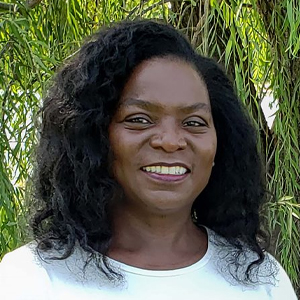Future of college will involve fewer professors
At a large private university in Northern California, a business professor uses an avatar to lecture on a virtual stage.

students.
Meanwhile, at a Southern university, graduate students in an artificial intelligence course discover that one of their nine teaching assistants is a virtual avatar, Jill Watson, also known as Watson, IBM’s question-answering computer system. Of the 10,000 messages posted to an online message board in one semester, Jill participated in student conversations and responded to all inquiries with 97% accuracy.
At a private college on the East Coast, students interact with an AI chat agent in a virtual restaurant set in China to learn the Mandarin language.
These examples provide a glimpse into the future of teaching and learning in college. It is a future that will involve a drastically reduced role for full-time tenured or tenure-track faculty who teach face to face.
I forecast this future scenario and other trends in my 2021 book “Human Specialization in Design and Technology: The Current Wave for Learning, Culture, Industry and Beyond.” As a researcher who specializes in educational technology, I see three trends that will further shrink the role of traditional college professors.
1. The rise of artificial intelligence
According to a 2021 Educause Quick Poll report on AI, many institutions of higher education find themselves more focused on the present limited use of AI – for tasks such as detecting plagiarism or proctoring – and not so much the future of AI.
AI’s use in higher education has largely been concerned with digital assistants and chat agents. These technologies focus on the teaching and learning of students.
In my view, universities should broaden their use of AI and conduct experiments to improve upon its usefulness to individual learners. For example, how can colleges use AI to improve student learning of calculus or help students become stronger writers?
However, most universities are slow to innovate.
According to a 2021 poll, some of the challenges to acquiring AI included lack of technical expertise, financial concerns, insufficient leadership and biased algorithms.
Rensselaer Polytechnic Institute and Massachusetts Institute of Technology are leading the way with new uses of AI. In an immersion lab staged as a food market in China, Rensselaer virtually transports students learning Mandarin Chinese into this market to interact with AI avatars. MIT has devoted millions of dollars to faculty research in AI. One of MIT’s projects – called RAISE, for Responsible AI for Social Empowerment and Education – will support how people from diverse backgrounds learn AI, and human learning in general.
Professors from the baby-boom generation are retiring, and I expect some of their jobs will not be filled. In many cases, these coveted positions will be replaced by part-time and temporary faculty. I believe the rising use of AI will contribute to this trend, with universities relying more on technology than in-person teaching.
2. Erosion of academic tenure
Tenure is a status that grants professors protections against being outright fired without due cause or extraordinary circumstances. However, the pandemic became a means to dismiss, suspend or terminate tenured faculty. For example, the Kansas Board of Regents in January 2021 voted to allow emergency terminations and suspensions – including for tenured faculty – to alleviate financial pressures placed on universities by the pandemic.
News reports continue to show a steady decline in the number of tenured faculty positions. According to an American Association of University Professors report, the proportion of part-time and full-time nontenure-track faculty grew from 55% in 1975 to 70% in 2015. Conversely, the proportion of full-time tenured and tenure-track faculty fell from 45% to 30% in that period.
Universities used the pandemic as a reason to override and diminish the power of shared leadership with faculty. That included voiding faculty handbooks, regulations and employment contracts.
Ultimately, the pandemic was an opportunity for universities to downsize unproductive faculty and keep “active practitioners.”
3. The flipped classroom
The flipped classroom provides students with opportunities to view, listen and learn at their own pace through video instruction outside the classroom. It has been around since at least 2007.
This teaching approach is similar to the way people learn from one another by watching videos on YouTube or TikTok. However, in college the flipped classroom involves prerecorded faculty lectures of course content, whether that be on the causes and effects of the Civil War or the origins of white rice. In class, students build on the professor’s prerecorded lecture and work on activities to assist discussions and expand knowledge. The classroom becomes a place for social interaction and understanding course content. The flipped classroom maximizes instructional time for the professor and students because the lecture comes before the course’s in-class session.
As an example of the operation of a flipped classroom, a professor records a video on a subject area. This allows the same video to be viewed by one student or thousands of students. A human teaching assistant, avatar or chat agent conducts all in-class activities, tests and group work. No additional professors are needed to teach multiple sections of the same course. Professors, in this example, serve a limited role and ultimately will be needed less.
These trends illustrate a profession that I see as being on the cusp of radical transformation.
This article is republished from The Conversation under a Creative Commons license. Read the original article.
![]()
Enjoy reading ASBMB Today?
Become a member to receive the print edition four times a year and the digital edition monthly.
Learn moreFeatured jobs
from the ASBMB career center
Get the latest from ASBMB Today
Enter your email address, and we’ll send you a weekly email with recent articles, interviews and more.
Latest in Opinions
Opinions highlights or most popular articles

Making my spicy brain work for me
Researcher Reid Blanchett reflects on her journey navigating mental health struggles through graduate school. She found a new path in bioinformatics, proving that science can be flexible, forgiving and full of second chances.

The tortoise wins: How slowing down saved my Ph.D.
Graduate student Amy Bounds reflects on how slowing down in the lab not only improved her relationship with work but also made her a more productive scientist.

How pediatric cataracts shaped my scientific journey
Undergraduate student Grace Jones shares how she transformed her childhood cataract diagnosis into a scientific purpose. She explores how biochemistry can bring a clearer vision to others, and how personal history can shape discovery.

Debugging my code and teaching with ChatGPT
AI tools like ChatGPT have changed the way an assistant professor teaches and does research. But, he asserts that real growth still comes from struggle, and educators must help students use AI wisely — as scaffolds, not shortcuts.

AI in the lab: The power of smarter questions
An assistant professor discusses AI's evolution from a buzzword to a trusted research partner. It helps streamline reviews, troubleshoot code, save time and spark ideas, but its success relies on combining AI with expertise and critical thinking.

How AlphaFold transformed my classroom into a research lab
A high school science teacher reflects on how AI-integrated technologies help her students ponder realistic research questions with hands-on learning.

